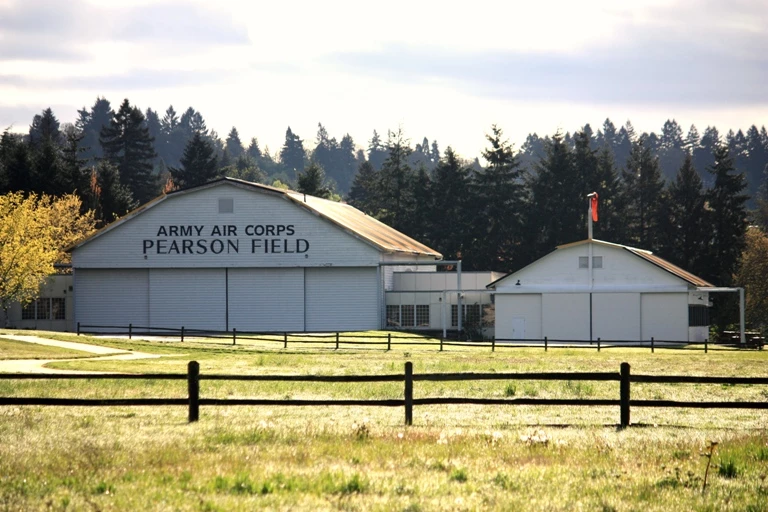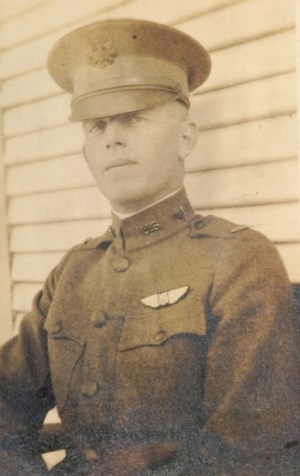
NPS PHOTO 
NPS PHOTO In the early years of the 20th century, Vancouver Barracks, and its polo field, was a central place for aviation enthusiasts to gather and try out their aircraft. During these early years at the Vancouver Barracks polo field, civilian aviators like Silas Christofferson, Charles Walsh, Walker Edwards, and Louis Barin wowed crowds with aerial acrobatics and feats. When the United States entered World War I in 1917, the polo field became the site of the Spruce Production Division's Spruce Cut-Up Mill, where spruce logged from the forests of the Pacific Northwest was manufactured into aviation-grade lumber. The lumber produced by the Spruce Mill was used to construct Curtiss JN-4 aircraft for pilots in training, and De Havilland DH-4 aircraft for combat overseas. In the early 1920s, the Spruce Mill was demolished, and the field once again became an air field, first known as the "Vancouver Barracks Aerodrome," and christened "Pearson Air Field," after Lt. Alexander Pearson, in 1925. Beginning in 1923, the field was home to the 321st Observation Squadron, 96th Division, commanded by Lt. Oakley Kelly from 1924-1929, and by Lt. Carlton Bond from 1929-1933 and 1938-1940. Among the more notable aviation achievements tied to Pearson Field is landing of the Douglas World Cruisers, on their way to achieving the first aerial circumnavigation of the globe, at the field in 1924. Another highlight in the history of Pearson Field occurred in June 1937, when the Soviet Union launched the first trans-polar flight from Moscow with a three man crew, piloted by Valery Chkalov. After over three days of flying, and while en route to San Francisco, the ANT-25 aircraft piloted by Chkalov touched down at Pearson Field due to an engine oil leak. The event put Pearson Field, and Vancouver, Washington, on the front page of newspapers around the world. Pearson Field was decommissioned by the Army Air Corps at the end of World War II, but it remains in service as a municipal airfield. Learn about visiting Pearson Air MuseumPearson Field History |
Last updated: August 10, 2020
